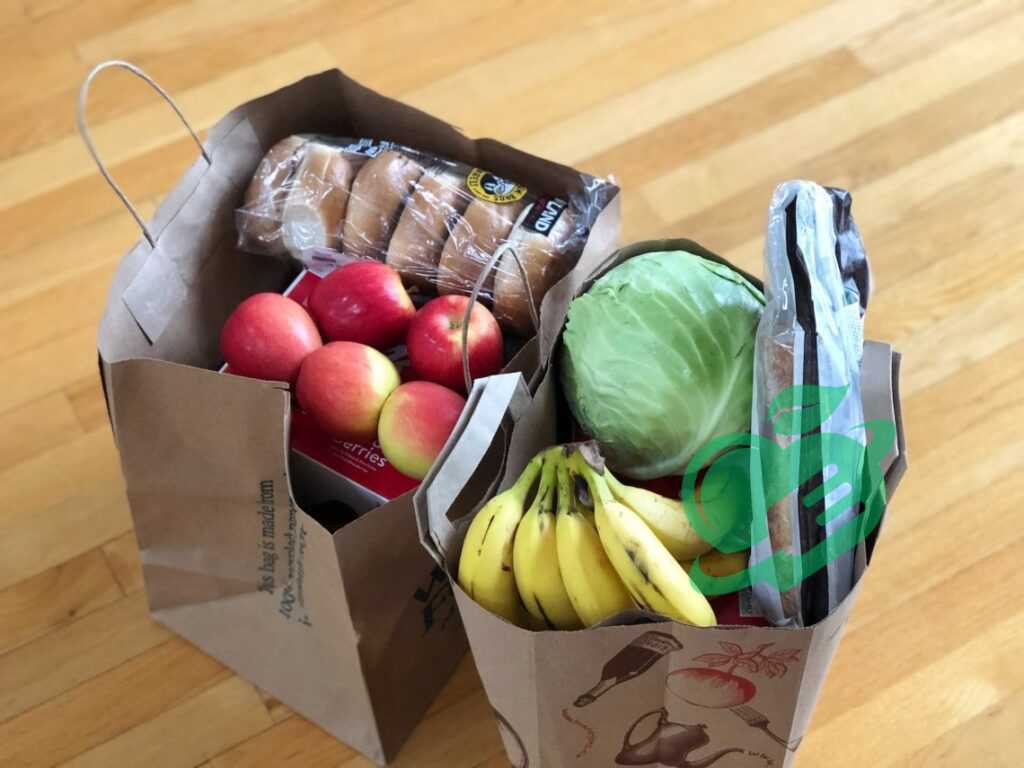5 Simple Tips to Slash Your Grocery Bill in Half

Overview of Grocery Expenses
Grocery Bill expenses play a significant role in household budgets, often accounting for a large portion of monthly expenditures. Research indicates that families can spend anywhere from 10% to 15% of their income on groceries. With the price of food fluctuating due to various factors such as inflation, seasonal changes, and supply chain issues, it becomes increasingly important to keep these costs in check. Imagine walking through your local grocery store, aiming to pick up the essentials. You might be surprised to find that small purchases—like snacks, beverages, or even cleaning supplies—can add up quickly. A cart that started as a $50 trip can easily morph into a $100 bill if you’re not careful. Here are some typical grocery spending categories:
- Produce: Fresh fruits and vegetables
- Meats: Poultry, beef, and seafood
- Dairy: Milk, cheese, and yogurt
- Pantry Staples: Rice, pasta, and canned goods
- Snacks & Beverages: Chips, sodas, and sweets
- Household Items: Cleaning supplies and toiletries
Understanding where your money goes can help you identify areas for potential savings.
Read also: What are the health benefits of eating garlic on an empty stomach?
Importance of Cutting Grocery Costs-Grocery Bill
With grocery expenses being such a considerable part of the budget, finding effective ways to cut these costs can lead to substantial savings over time. Imagine freeing up an extra $50 to $100 each month. That’s money that could contribute to savings, a fun family outing, or even a vacation! Here are several compelling reasons to focus on reducing grocery spending:
- Enhanced Financial Flexibility: Saving money on groceries provides more room in your budget for other necessities or emergencies. A slimmer grocery budget means you can allocate funds to savings or debt repayment.
- Healthier Eating Choices: By prioritizing essential items and planning meals, families often end up with healthier options as they steer clear of impulse buys. Those extra snacks and treats that seem harmless can lead to unhealthy eating habits and weight gain.
- Increased Awareness of Consumption: Cutting grocery costs requires planning and mindfulness about dietary needs, food waste, and purchasing habits. This awareness can contribute to not just savings, but also promote sustainability.
For example, after implementing a systematic approach to grocery shopping, one family found that they saved almost 30% on their monthly bill without sacrificing the quality of their meals. They did this by:
- Creating a meal plan before shopping
- Utilizing coupons and looking for sales
- Shopping at local markets for seasonal produce
In conclusion, understanding and addressing grocery expenses is crucial not only for immediate financial relief but also for building a sustainable and healthy lifestyle. As we transition to the next section, let’s explore the power of creating a well-thought-out shopping list and how planning ahead can set a solid foundation for saving money on groceries.
Read also: Garcinia Cambogia: A Superfood for Supercharging Your Health

Benefits of Planning Ahead-Grocery Bill
Building a shopping list might seem like a mundane task, but it can be a game changer when it comes to cutting grocery costs. When families take the time to plan ahead, they not only save money but can also reduce stress and food waste. Think about your last grocery trip. Did you walk in with a plan, or did you wander the aisles aimlessly? Many people find that walking in without a list can lead to spontaneous purchases—often for items they don’t need. Here’s how planning can benefit you:
- Saves Money: By sticking to a list, you can avoid impulse buys, which can account for a significant portion of your grocery spending. A well-prepared shopping list helps you focus only on what you need.
- Promotes Healthy Choices: With a list, you’re likely to incorporate healthier options. You can prioritize whole foods and ingredients for balanced meals rather than grabbing quick snacks or processed items that add extra calories and costs.
- Time Efficiency: Having a shopping list allows you to move through the store more quickly and effectively. This means fewer trips to the store and more time saved for other important activities.
- Reduces Food Waste: By planning meals and creating a list based on those meals, you can avoid buying excess food that often ends up spoiling in the fridge.
In one personal instance, a friend of mine started creating shopping lists based on her family’s weekly meal plan. She noticed her grocery bill decreased by nearly 25%, and her family enjoyed a more varied diet.
How to Prioritize Essentials-Grocery Bill
Once the benefits of planning are clear, the next step is learning how to prioritize the essentials on your shopping list. This requires understanding what your family truly needs and finding a balance between necessities and occasional treats. Here are some tips to help you effectively prioritize:
- Assess Pantry Inventory: Before making your list, do a quick inventory of what you already have. This helps to use up items that are nearing expiration and prevents purchasing duplicates.
- Plan Meals for the Week: Consider what meals your family will have for the week ahead. Focus on versatile ingredients that can be used in multiple dishes, such as chicken, beans, rice, and fresh vegetables.
- Categorize Your List: Organize your shopping list into categories like produce, dairy, proteins, and pantry items. This not only helps you navigate the store more efficiently but also ensures that you’ve covered all essential food groups.
- Limit Treats: While it’s fine to have some snacks or treats on the list, limit these purchases. By doing so, you keep your grocery budget in check while still allowing for an occasional indulgence.
- Stick to Seasonal: Base your grocery choices on seasonal produce and items. This can not only save money but also enhance meal flavors with fresh ingredients.
By embedding these strategies into your grocery routine, you’ll create a habit that streamlines your shopping experience, saves money, and encourages healthier eating. The next section will delve into how you can further optimize your grocery shopping by taking advantage of sales and coupons.

Finding the Best Deals
Now that you have your shopping list in hand, it’s time to strategize how to maximize your savings by taking advantage of sales and coupons. Just as a well-prepared chef doesn’t start cooking without first gathering the freshest ingredients, savvy shoppers don’t enter the grocery store without scouting for the best deals. Finding the best deals requires a bit of research but can considerably reduce your total grocery costs. Here are several tips to help you uncover the best offers:
- Browse Weekly Ads: Most grocery stores release weekly ads that spotlight sales and discounts. By reviewing these ads, you can plan your shopping list around what’s on sale, ensuring you get the best deal possible.
- Use Price Comparison Apps: There are numerous apps available that allow you to compare prices across different stores in your area. This can save you time and money by directing you to where your favorite items are cheapest.
- Join Loyalty Programs: Many grocery stores offer loyalty or rewards programs that provide exclusive discounts, promotions, or points for future purchases. Signing up can translate into significant savings over time.
- Explore Local Farms or Markets: Depending on the season, local farmers’ markets can offer fresh produce at competitive prices. Not only do you get great deals, but you support local farmers, which is a win-win!
In a recent shopping excursion, a neighbor discovered that by adjusting their weekly shopping day to coincide with the store’s sale days, they saved nearly 40% on their grocery bill! It’s all about timing and being aware of the promotions around you.
Read also: Understanding the Importance of Mental Health First Aid
Strategies for Effective Couponing-Grocery Bill
While finding sales is a great start, effective couponing can further enhance your savings journey. Many people hesitate to engage in couponing due to the extra effort involved, but with a few strategies, it can become a seamless part of your grocery routine.
- Organize Your Coupons: Create a system to keep track of your coupons. Whether you opt for a small binder or a digital method, having your coupons organized means you won’t miss out on any discounts when it’s time to shop.
- Stack Coupons and Sales: Sometimes, you can combine store sales with manufacturer coupons. This stacking can double your savings. For instance, if an item is on sale for $3 and you have a $1 off coupon, you only pay $2 for that item!
- Focus on Products You Regularly Use: To avoid wasting coupons, only clip those for items you would normally buy. This ensures you’re getting a deal on products you need, thus maximizing your savings without unnecessary purchases.
- Use Digital Coupons: Many grocery stores now offer digital coupons that can be loaded directly onto store loyalty cards. This makes the process easier, as you don’t need to remember to bring paper coupons to the store.
- Stay Informed: Sign up for newsletters from your favorite grocery stores or couponing websites to stay updated on new deals, promotions, and coupon codes.
By utilizing these strategies, you can make the most out of your grocery budget and take full advantage of the various discounts available. As we transition into the next section, we’ll discuss the incredible cost-saving benefits of cooking and eating at home, which perfectly complements these efforts in your journey to cut grocery costs.
Read also: Sinus Headache SOS: Quick Fixes and Long-Term Solutions

Cost Savings of Home Cooking-Grocery Bill
Now that you’ve uncovered sales and maxed out your coupon potential, the next essential step in managing your grocery costs is embracing the value of cooking and eating at home. Home cooking not only allows you to control ingredients and portions but also leads to significant savings. Consider this: the average meal prepared at home can cost anywhere from $3 to $5 per plate. In contrast, ordering takeout or dining out typically ranges from $10 to $20 per person! For a family of four, that adds up quickly. Here are some benefits that illustrate the cost savings associated with home cooking:
- Lower Food Costs: When you cook at home, you can purchase ingredients in bulk, reducing the price per meal. Ingredients that can be used across various dishes inherently save money.
- Health Benefits: Home-cooked meals often use fresher ingredients, which can lead to healthier eating habits. This, in turn, can save money on healthcare costs over time by reducing health-related expenses.
- Less Waste: When you prepare meals at home, you can control portion sizes and repurpose leftovers into new dishes, minimizing food waste that often occurs with takeout.
Take, for instance, a family who decided to swap their weekly takeout for home-cooked meals. They planned their meals, cooked together, and discovered that they saved over $150 a month! This time spent together cooking also strengthened their family bonds.
Meal Prep and Batch Cooking Tips-Grocery Bill
One effective way to make home cooking sustainable is through meal prep and batch cooking. By preparing meals in advance, families can ensure a variety of delicious food options throughout the week without the daily time crunch of cooking. Here are some tips to make meal prep work for you:
- Choose a Prep Day: Designate a specific day of the week for meal prep, typically a weekend when you have more time. Use this time to cut vegetables, marinate proteins, or cook large batches of grains.
- Select Versatile Recipes: Choose recipes that use similar ingredients or can be mixed and matched. Think grain bowls, stir-fries, or soups that can adapt to whatever you have on hand.
- Utilize Freezer Space: Cook larger portions and freeze leftovers in individual containers. This way, you have homemade meals ready to go for busy days, preventing room for impulse takeout.
- Invest in Quality Containers: Purchase stackable containers for easy storage in your fridge or freezer. Clear containers will allow you to see what meals are available, reducing the temptation to order out.
- Plan for Variety: To keep meals interesting, rotate between different cuisines and ingredients. You might have a Mexican night with tacos one week and an Italian night with pasta the next.
Embracing meal prep and batch cooking not only maximizes the benefits of home cooking but also saves time throughout the week, making it easier to stick to your budget. As we transition to the final section, we will explore how to shop smart and avoid impulse buys, ensuring your grocery expenditure is always in check.
Read also: Find the Best Grocery Stores Open on Thanksgiving
Read also: Unraveling the Mystery Behind Increasing mpox Cases

Techniques to Stay on Budget-Grocery Bill
Having embraced the art of cooking at home, it’s now crucial to ensure that your shopping trips remain efficient and budget-friendly. One of the biggest challenges many shoppers face is impulse buying—those little extras that sneak into your cart and wreak havoc on your budget. However, there are practical techniques you can utilize to stay on track and avoid straying from your budget.
- Set a Firm Budget: Start each shopping trip with a predetermined budget. Knowing exactly how much you can spend helps you make better choices at the store.
- Use Cash: If feasible, consider using cash instead of cards. With cash, you can physically see the money leaving your pocket, which often leads to more mindful spending.
- Stick to Your Shopping List: You’ve worked hard to create an informed shopping list—now, stick to it! If you find yourself eyeing non-essential items, remind yourself of your goals and try to maintain your discipline.
- Implement a 24-hour Rule: If you come across a tempting item that isn’t on your list, consider waiting 24 hours before making the purchase. This cooling-off period often helps deter unnecessary spending.
- Involve the Family: If you shop with family members, encourage them to help stick to the budget. Assign roles based on the grocery list, so everyone knows what’s essential and what isn’t.
A neighbor of mine followed these techniques and found that her grocery bill was reduced by nearly 15% simply by committing to her budget.
Understanding Store Layouts and Marketing Tactics _Grocery Bill
To fully prepare yourself for success while shopping, it’s essential to understand how grocery stores are designed and how marketing tactics influence purchasing behavior. Many stores are specifically laid out to encourage impulse buys and lead you to spend more than intended.
- Common Store Layouts: Most grocery stores arrange essential items like milk and bread at the back, compelling shoppers to traverse the aisles and discover additional products along the way. Be mindful of this layout—shop the perimeter for fresh produce, dairy, and meat while keeping the middle aisles for essential pantry items.
- Eye Level is Buy Level: Products placed at eye level are often heavily marketed, so be savvy. Look up or down for less expensive yet equally viable options, especially store brands or generics.
- End Caps and Displays: Those attractive displays at the end of the aisles may entice you to make impulse purchases. Before adding anything from these displays to your cart, revisit your shopping list and evaluate whether these items are truly necessary.
- Sales Signs and Promotions: While sales can be a great opportunity to save, be cautious. Not every sale item needs to find its way into your cart. Ask yourself if it fits within your budget and aligns with your meal plan.
Final Tips for Grocery Shopping
Know How Much You Spend on Food
Family budgeting specialist Rob Bertman suggests that the initial step to reducing your grocery expenses is to determine your current spending.
He remarked, “Occasionally, individuals establish a grocery budget without any basis, but it can be challenging to adhere to it if they are unaware of their current spending habits.”
That’s why Bertman suggests looking at an old receipt and past credit card transactions from previous grocery shopping trips to determine your current grocery spending.
Plan a meal
It’s essential to develop a meal plan that outlines how you intend to consume everything you purchase. Occasionally, individuals buy food thinking they’ll eat it, but it often ends up spoiling instead.
This is why Bertman emphasizes the need for shoppers to have realistic expectations regarding their meal planning. He noted, “You may create an excellent meal plan for the week, but after a long day at work, you might be too exhausted and opt for fast food instead.”
Check the fridge first
Tiffany Gerzon, the writer of Save Money on Groceries Without Losing Your Mind, emphasizes the importance of examining the fridge and pantry before going grocery shopping.
She clarified that addressing this issue will prevent unnecessary purchases and repetition.
Reduce meat consumption
Many individuals cut back on meat for health benefits, but it can also be a significant financial consideration.
Gerzon highlighted a simple method to save money by decreasing meat consumption in your meals, such as opting for three-quarters of a kilogram instead of a full kilogram per meal.
Regarding the advantages of this plan, she clarified that if you purchase one kilogram and save a quarter kilogram, cooking three meals using the same ingredients will leave you with enough to prepare a fourth meal.
Buy frozen products
Consumers purchase food items for consumption, but these items can spoil. A budget-friendly alternative is to opt for frozen products.
Looking in the freezer section, at its most basic level, will provide you with the most affordable choice.
Buy spices in bulk
If you frequently use spices in your cooking, it’s best to purchase them in larger quantities rather than in small, pricey packages.
Gerzon emphasized that purchasing spices in large quantities is her top recommendation for saving money.
Avoid buying at eye level
Gerzon thinks that purchasing items placed at eye level can be quite costly, as people tend to act on their instinct to complete their shopping swiftly.
Retailers capitalize on this by placing their highest-priced items in that area, so make sure to consider the placement of your products carefully.
To stay up to date on the latest health and nutrition developments in the United States, visit our website Power Up Your Health, and gain more tips and solutions for a healthier life.



